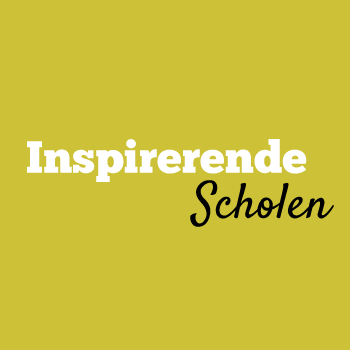Bron: Bedrock, juni 2020
Teachermagazine.com, maart 2020
Dit artikel is een samenvatting van het oorspronkelijke Bedrock artikel, aangevuld met informatie uit Teachermagazine (Engels).
Hoe vaak heb jij jezelf afgevraagd of je vakken die je moest leren echt nodig zou hebben later? Best vaak, waarschijnlijk. Finland heeft besloten hun onderwijssysteem te veranderen naar een meer geschikte methode voor de 21e eeuw: phenomenon based learning, ofwel ‘fenomeen gebaseerd leren’.
PhBL bestaat uit een holistische aanpak. In plaats van vakken volgens de reguliere manier van lesgeven te onderwijzen, vormt niet één onderwerp als aardrijkskunde het startpunt voor de les, maar een holistisch fenomeen. Hoe gaat dat in z’n werk? Waar lessen als aardrijkskunde, wiskunde en economie doorgaans keurig via een boekje worden onderwezen, vormt bij PhBL niet meer dat boekje, maar vormen verschijnselen of onderwerpen uit de echte wereld de basis voor de les.
Deze manier van lesgeven draait om onderzoekend en probleemoplossend leren waarbij je projectmatig leert werken en meteen een portfolio opbouwt. Bij deze vorm van lesgeven staat co-teaching centraal waarbij leraren intensief moeten samenwerken en er input komt van meer dan één vakspecialist.
Resultaat is: studenten blijken meer samen te werken met hun leeftijdsgenoten en docenten, delen informatie en bouwen gezamenlijke nieuwe kennis op. Met deze diepere kennis creëren ze meer eigen ideeën, bewustzijn en emoties over het onderwerp waarover zij leren.
Let wel: het normale curriculum met vaste vakken wordt niet helemaal losgelaten. Er wordt 1 periode/module van PhBL ingelast per jaar.
5 dimensies van PhBL
According to Vasileios Symeonidis and Johanna Schwartz (2016), there are five dimensions of a phenomenon-based approach to education: holisticity, authenticity, contextuality, problem-based inquiry, and open-ended learning processes. Combined, these dimensions provide a working model for educators when designing PhenoBL module.
- Holisticity refers to the need to decompartmentalise education. A holistic approach will address an issue from multiple viewpoints and identify how different viewpoints dovetail or contradict (Halinen, 2018). Viewing phenomena from the viewpoints of multiple different subject-based disciplines helps students to see the world in its complexity and seek out inclusive solutions to complex problems.
- The dimensions of authenticity and contextuality highlight the importance of exploring a real-world phenomenon. Authenticity refers to applying knowledge to something tangible, rather than engaging with only hypothetical and theoretical ideas (Symeonidis & Schwartz, 2016). Similarly, a contextualised phenomenon is one that exists within tangible time and space. The focus is not on a ‘topic’ per se, as a topic can be a sterile subject to be analysed in isolation from its context. A phenomenon, by contrast, is connected to a context in which it emerges.
- Problem-based inquiry and open-ended learning processes are also interlinked dimensions of PhenoBL (Silander, 2015). When students explore phenomena, they are required to identify and investigate problems or areas of interest that may arise. The aim is for students and teachers to collaborate in creating investigations that are achievable and relevant to areas of the phenomenon that spark the students’ interests.
Voordelen en uitdagingen
Benefits
- PhenoBL has an eye to the future. It acknowledges that challenges of tomorrow will be addressed by multidisciplinary teams working together on complex problems like sustainability, urbanisation and the rise of artificial intelligence.
- This approach may also help break down communication barriers. When choosing to view a topic from multiple viewpoints, students can be forced to confront contradictory ways of seeing complex concepts like climate change, migration policies, and food sustainability. By seeing the world in its complexity, students are asked to live within moments of uncertainty and accept diversity as a natural occurrence in 21st Century life.
Challenges
- Lähdemäki (2018) has highlighted that teachers and students find it difficult to move from identifying a phenomenon to constructing a manageable interdisciplinary unit of inquiry around it. Teachers need to guide students through finding a problem that is manageable enough to explore but large enough to be analysed from multidisciplinary viewpoints.
- Another challenge for educators is balancing student-led inquiry with a continuing need to meet and assess curriculum outcomes.
Furthermore, subject-based classes should not be considered to be redundant. In Finland’s case, PhenoBL does not represent a wholesale reform of curriculum design (Symeonidis & Schwartz, 2016). Subject-based classes remain. Rather, the reforms mandate ‘study periods’ during which teachers from multiple disciplines come together to teach one multidisciplinary module per year (Halinen, 2018).
In het schooljaar van 2016 – 2017 is Finland al gestart met de nieuwe manier van lesgeven, maar maakte dit per schooljaar 2020 verplicht.





